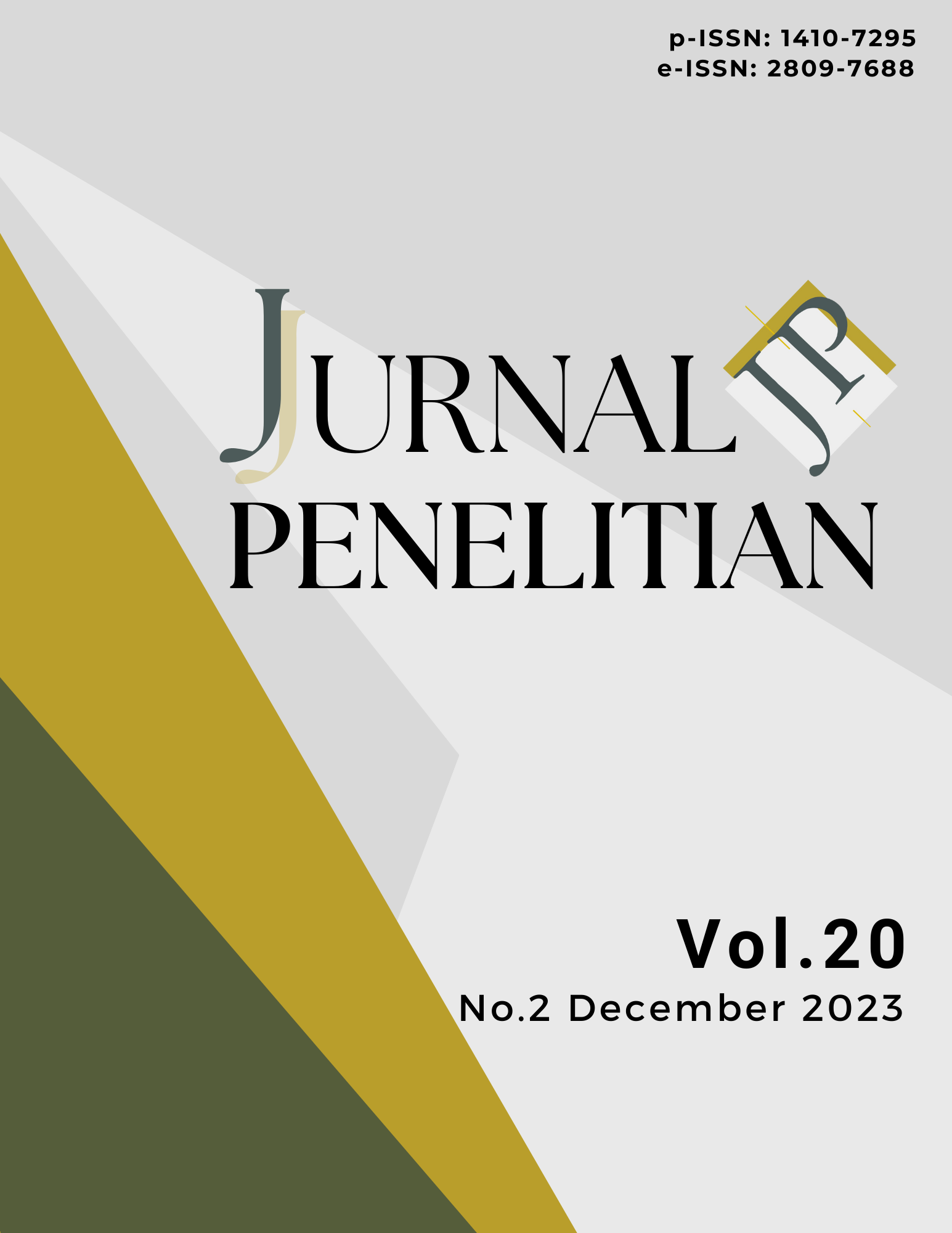The operational process efficiency and profitability on food and beverage companies in Indonesia
DOI:
https://doi.org/10.26905/jp.v20i2.12751Keywords:
Eficiency, Inventory Turnover, Profitability, Receivable TurnoverAbstract
High profitability can create attractiveness for investors, and also provide opportunities for company growth. Improving profitability can be achieved through efforts to enhance operational efficiency and optimize the allocation of company resources. This research aims to investigate the impact of Receivable Turnover (RTO) and Inventory Turnover (ITR) on Profitability (ROA) in the food and beverage sub-sector companies listed on the Indonesia Stock Exchange (IDX) during the period 2018-2022. Data collection methods involve documentation, utilizing financial reports from six companies with the highest sales turnover. Using multiple linear regression analysis, the research findings reveal that Receivable Turnover (RTO) significantly influences Profitability (ROA) positively. This indicates that increased efficiency in receivables management can contribute positively to a company's profitability. Meanwhile, Inventory Turnover (ITR) does not have a significant impact on ROA. This finding suggests that efficiency in inventory management does not directly affect the level of profitability. The implications of this research underscore the importance for management to maintain efficiency in receivables management and continually improve operational efficiency in inventory management. Thus, companies can more quickly convert inventory into sales, avoid excess idle inventory, and overall improve profitability performance.
Downloads
References
Hartati, N. (2018). Pengaruh perputaran kas, piutang, dan persediaan terhadap profitabilitas perusahaan makanan dan minuman di Bursa Efek Indonesia. Jurnal Pengembangan Wiraswasta, 19(1), 1-12. http://dx.doi.org/10.33370/jpw.v19i1.120
Hasanudin, H., Awaloedin, D. T., & Arviany, D. D. (2022). The impact of cash turnover, accounts receivable turnover, and inventory turnover on return on assets (ROA) for agribusiness companies listed on the Indonesia stock exchange (IDX) during the period 2016-2020. Jurnal Info Sains: Informatika dan Sains, 12(02), 37-44.
Keegan, K. K., & Dewi, S. P. (2023). Faktor-faktor yang memengaruhi return on asset. Jurnal Paradigma Akuntansi, 5(1), 67-77. https://doi.org/10.24912/jpa.v5i1.22169
Maisa, S., Tripuspitorini, F. A., & Sarusu, A. M. (2020). Pengaruh receivable turnover dan working capital turnover terhadap profitability pada perusahaan farmasi yang terdaftar di BEI periode 2014-2018. Indonesian Journal of Economics and Management, 1(1), 35-48. https://doi.org/10.35313/ijem.v1i1.2416
Migang, S., & Irawan, A. (2019). Pengaruh cash turnover, working capitalturnover, receivable turnover, dan inventory turnover terhadap return on asset pada perusahaan keramik yang terdaftar di Bursa Efek Indonesia. Jurnal GeoEkonomi, 10(2), 219–238. https://doi.org/10.36277/geoekonomi.v10i2.60
Nuraini, A. I. (2021). The effect of cash turnover and inventory turnover on return on assets (ROA). Almana : Jurnal Manajemen Dan Bisnis, 5(2), 259–270. https://doi.org/10.36555/almana.v5i2.1659
Rajagukguk, A., & Siagian, H. (2021). Inventory turnover and accounts receivable turnover on profitability: an evidence of chemical companies listed in IDX. Jurnal Bisnis dan Kajian Strategi Manajemen, 5(2). https://doi.org/10.35308/jbkan.v5i2.4058
Rudianto, R. (2012). Pengantar akuntansi konsep dan teknik penyusunan laporan keuangan. Adaptasi IFRS Penerbit Erlangga.
Setiani, T., & Andini, R. A. Q. (2023). Pengaruh rasio solvabilitas dan rasio aktivitas perusahaan terhadap rasio profitabilitas perusahaan pada subsektor makanan dan minuman yang terdaftar di Bursa Efek Indonesia periode 2020-2023. Jurnal Akuntansi, 18(02), 68–81. https://doi.org/10.58457/akuntansi.v18i02.3448
Suraya, A. (2018). The influence of accounts receivable turnover and inventory turnover on profitability at PT Sumber Alfaria Trijaya Tbk. PINISI Discretion Review, 2(1), 77-84. https://doi.org/10.26858/pdr.v2i1.13246
Syakhiya, N. (2020). Pengaruh rasio aktivitas terhadap kinerja keuangan pada perusahaan food and beverages yang terdaftar di Bursa Efek Indonesia (BEI). Jurnal Ilmiah Manajemen dan Bisnis (Jimbi), 1(2), 106-111. https://doi.org/10.31289/jimbi.v1i2.384
Wahyuningsih, S., Widodo, U., Indriyatni, L., & Yuliati, Y. (2023). The effect of cash turnover, receivable turnover, and total asset turnover to profitability in food and beverage companies listed on the IDX during the 2018-2020 period. Fokus Ekonomi : Jurnal Ilmiah Ekonomi, 18(2), 202–208. https://doi.org/10.34152/fe.18.2.202-208
Werdiningtyas, R. (2019). Analisis pengaruh Receivable Turnover (RTO), Inventory Turnover (ITO), Working Capital Turnover (WCTO), dan Total Asset Turnover (TATO) terhadap profitabilitas pada perusahaan yang terdaftar di Jakarta Islamic Index (JII) periode 2011-2017. Jurnal Sains Ekonomi dan Perbankan Syariah: Journal Science of Economic and Shariah Banking, 8(1), 19-29.
Wijaya, L. V., & Tjun, L. T. (2017). Pengaruh cash turnover, receivable turnover, dan inventory turnover terhadap return on asset perusahaan sektor makanan dan minuman yang terdaftar di Bursa Efek Indonesia periode 2013 –2015. Jurnal Akuntansi, 9(1), 74-82. https://doi.org/10.28932/jam.v9i1.492
Wulandari, N., & Lubis, I. (2021). Influence of receivables turnover and inventory turnover to profitability PT Kimia Farma (Persero) Tbk. Indonesian Financial Review, 1(2), 114-132. https://doi.org/10.55538/ifr.v1i2.9
Downloads
Published
How to Cite
Issue
Section
License
Authors who publish in this journal agree to the following terms:
- Copyright of the published articles will be transferred to the journal as the publisher of the manuscripts. Therefore, the author confirms that the journal has managed the copyright.
- Publisher of Abdimas: Jurnal Pengabdian Masyarakat Universitas Merdeka Malang is University of Merdeka Malang.
- The copyright follows the Creative Commons Attribution-ShareAlike License (CC BY SA): This license allows to share, copy, and redistribute the material in any medium or format, adapt, remix, transform, and build upon the material, for any purpose, even commercially.


